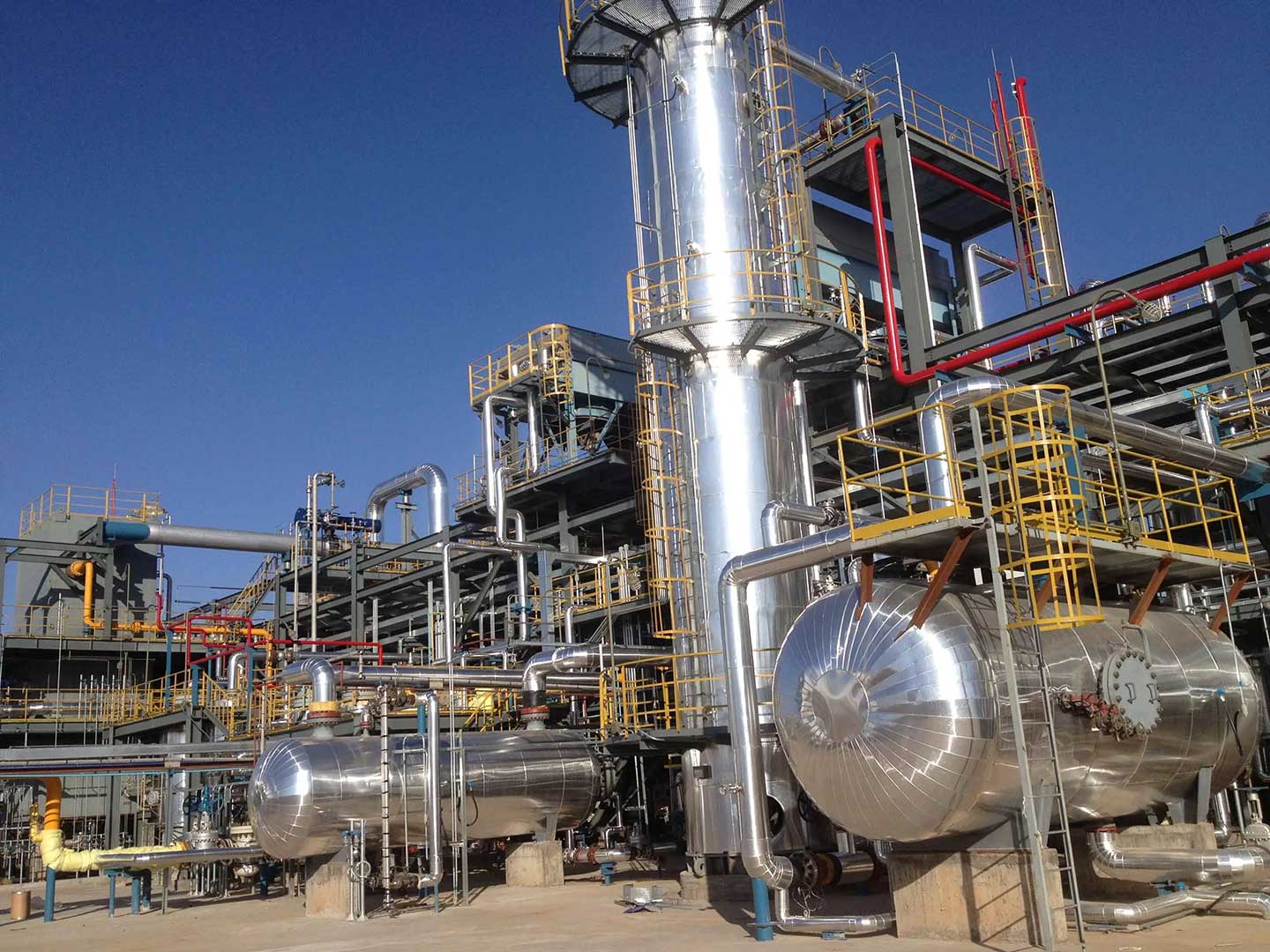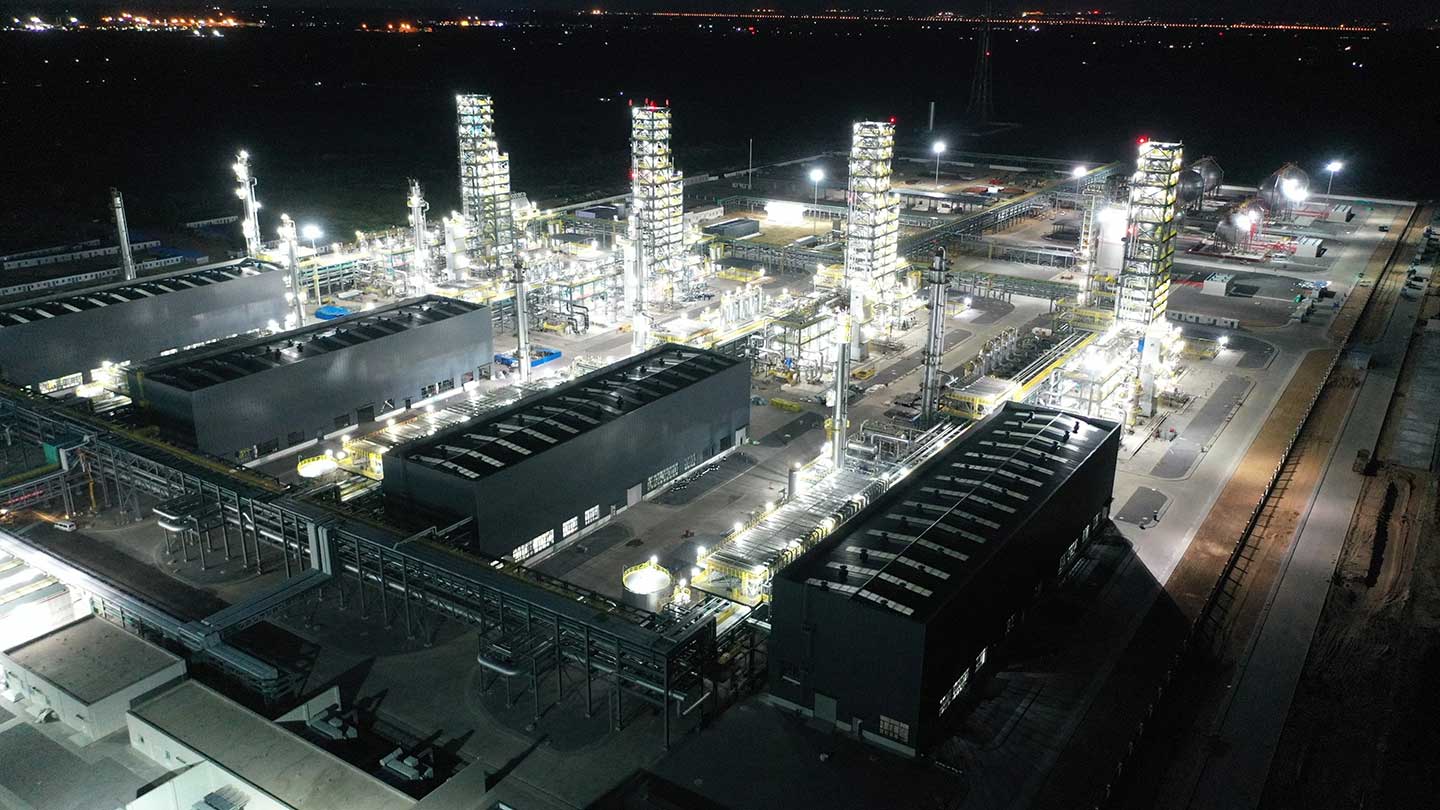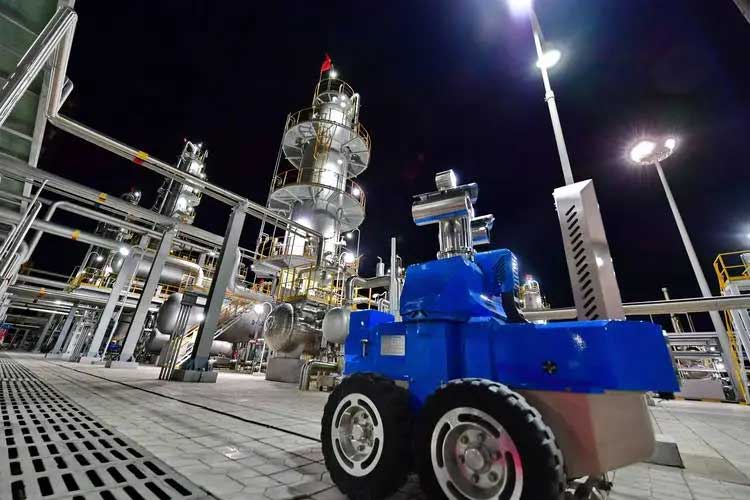LPG Station
 27/12/2022
27/12/2022As a lighting facility in an explosive hazardous environment, its safety has been paid more and more attention.

1 The principle of explosion-proof lamps
Explosion-proof principle of commonly used explosion-proof lamps
1) Flameproof lamps
Place the parts that can generate spark arc or high temperature during normal operation of the lamp in the flameproof enclosure. The flameproof enclosure can withstand the internal explosion pressure without damage, and can ensure that the internal flame gas reduces energy when it propagates through the gap, which is not enough Detonate the gas outside the shell.
2) Increased safety lamps
During normal operation, no arc, spark and dangerous high temperature will be generated, and further protective measures are taken on the structure to improve the safety and reliability of the lamp. Increased safety lamps are relatively simpler in structure than flameproof lamps, so they are subject to more restrictions in use, and are currently used less and less.
3) Composite lamps
The main light source of this series of lamps is fluorescent lamps, and the components are combined with various explosion-proof types. Such as a typical explosion-proof fluorescent lamp, the casing adopts the increased safety type, the ballast adopts the sand-filled type, the light source is ignited in a special way, and the internal isolating switch adopts the explosion-proof type. The use of composite lamps can give full play to the advantages of various explosion-proof types, so that the lamps are easy to use and maintain, and the use places are more extensive, and the product performance is superior.
4) "n" type lamps (non-sparking type)
Explosion-proof lamps are realized by limiting internal arc sparks or hot surface components. This lamp is not much different from the increased safety lamps, but it uses a little more light sources and has more restrictions on the place of use.
5) Intrinsically safe lamps
By limiting the internal energy, it is guaranteed that the electric spark and thermal effect produced by the lamp under normal or specified fault conditions cannot ignite the explosive mixture. Intrinsically safe lamps are mainly lamps with low-power LED light sources, and the power is generally below 10W.

2 Selection of explosion-proof lamps
1. Lamp selection
The selection of explosion-proof lamps should be selected according to the category and area level of the explosion-hazardous place, as well as the level and group of the explosive mixture existing in the place. The selection of explosion-proof lamps must meet the following conditions:
(1) The corresponding electrical explosion-proof type should be selected to meet the hazardous area divided by the hazardous area; the hazardous area is divided into different areas according to the frequency and duration of the explosive environment.
The gas site is divided into three zones, namely Zone 0, Zone 1 and Zone 2.
Zone 0: A place where explosive mixtures in an explosive atmosphere appear or exist for a long time in the form of gas, vapor or mist.
Zone 1: During normal operation, the place where the explosive mixture may be in the form of gas, vapor or mist in the explosive environment is a typical application place for explosion-proof electrical equipment.
Zone 2: During normal operation, explosive mixtures in the form of gas, vapor or mist are unlikely to appear in the explosive atmosphere, and if they occur, they will only occur occasionally and exist for a short time.
Dust sites are divided into three zones, namely Zone 20, Zone 21 and Zone 22.
Zone 20: During normal operation, combustible dust occurs continuously or frequently, and its quantity is sufficient to form a combustible dust-air mixture and may form an uncontrollable and extremely thick dust layer and inside the container.
Zone 21: During normal operation, there may be places where the amount of dust is sufficient to form a combustible dust and air mixture but is not classified in Zone 20. This area includes places directly adjacent to the filling or discharge of dust, places where dust occurs, and places where flammable concentrations of combustible dust-air mixtures may be generated under normal operating conditions.
Zone 22: Under abnormal conditions, combustible dust clouds occasionally appear and only exist for a short time, or combustible dust occasionally accumulates or there may be a dust layer and a combustible dust-air mixture is generated, but it is not classified in Zone 21. If it is not possible to guarantee the exclusion of combustible dust accumulation or dust layer, it should be divided into zone 21;

(3) Consider the impact of other environmental conditions on explosion-proof performance (for example: chemical corrosion, salt spray, high temperature and high humidity, sand, dust, rain, or vibration);
(4) Guarantee the particularity of installation, use and maintenance;
(5) Choose products with explosion-proof certificates and corresponding national certifications. According to the above requirements, the explosion-proof type of explosion-proof lamps should be selected according to the regional level and scope of the explosive gas environment. For example, flameproof lamps must be used in Zone 1; fixed lamps in Zone 2 can be explosion-proof and increased safety. Portable lamps must be flameproof.
The level or group of the selected explosion-proof lamps should not be lower than the level and group of the explosive mixture in the explosive hazardous environment. At the same time, the influence of the environment on explosion-proof lamps should be considered, and the requirements of various environments such as ambient temperature, air humidity, corrosive or polluting substances, etc. should be met.
The protection level and anti-corrosion level of the lamps and lanterns should be selected according to different environmental requirements. Especially in the presence of corrosive gases in explosive gas atmospheres, it is crucial to choose lamps with corresponding anti-corrosion properties.

2. Protection requirements
(1) Lamps must have transparent parts, and the requirements for transparent parts are:
a. It can withstand the test of thermal shock test and impact test according to GB3836.1;
b. It is not allowed to be made into a threaded structure. The lamps should be equipped with an interlocking device that can only open the transparent part after the power is cut off, or replace it with a warning sign with the words "open the cover after the power is cut off".For Class I lamps with warning signs, the lamp holder parts must meet the requirements of GB1444-78 "Threaded Explosion-proof Lamp Holders".
The inlet cavity of the lamp and the light source cavity must be separated by reflectors or other heat insulation measures. The connecting piece fully connected with the lamp socket must be marked with the symbol "0". The metal protective net and shell of the lamp must be fixed reliably.
(2) The requirements for Class II portable lamps are:
a. Each component should be made of materials with sufficient resistance to chemical, mechanical, and battery medium corrosion.
b. The casing and protective net shall be made of metal materials that will not generate dangerous sparks due to impact and drop, or be covered with safety materials.
c. The distance between the transparent part and the light bulb shall not be less than 3mm when the power of the light bulb is less than 3W. When the power is not less than 3W, it must not be less than 5mm.
d. The distance between the transparent part and the protective net shall not be less than 5mm. The mesh area shall not be greater than 2000mm2.
e. The lead-in cable of the luminaire shall not be pulled out under clamping conditions with a force of 15kg.
f. The lamp can withstand the drop test specified in the relevant provisions of (GB3836.1).
When selecting explosion-proof lamps, you should first determine which explosion-proof area the lamp is located in, and then choose a suitable explosion-proof structure. The explosion protection class and temperature group should then be determined according to the explosion class and explosion group of the explosion-hazardous gases in the explosion-hazardous area. At the same time, understand the manufacturing level of the manufacturer, and consider the economy of the lamps on the premise of satisfying safety.
 +86 15061990229
+86 15061990229 info@lampsuite.com
info@lampsuite.com








